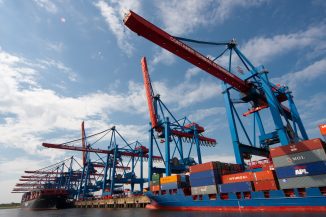
The global trade landscape is facing significant challenges, as indicated by recent reports from the United Nations Conference on Trade and Development (UNCTAD) and the International Monetary Fund (IMF). The key findings point to a contraction in global trade, with a projected 5% decline in 2023 compared to the previous year. This contraction is primarily attributed to diminished demand in developed nations, underperformance in East Asian economies and a decrease in commodity prices.
According to UNCTAD’s Global Trade Update, the contraction in trade of goods is expected to be substantial, with a nearly $2 trillion or 8% reduction. However, there is a contrasting trend in the services trade, which is expected to increase by about $500 billion or 7%. This divergence highlights the complex dynamics influencing different sectors of the global economy.
One notable factor contributing to the contraction is the underperformance of exports from developing countries. The uneven economic recovery and varying degrees of resilience among nations play a role in shaping the current trade landscape. Geopolitical tensions, high levels of debt, and overall economic fragility are identified as additional factors contributing to the pessimistic outlook in 2024.
The IMF’s warning of a potential “new Cold War” highlights the broader geopolitical challenges affecting the global economy. The ongoing conflict in Ukraine and tensions between the U.S. and China are identified as key drivers of fragmentation in the global economy. The IMF’s First Deputy Managing Director, Gita Gopinath, points out the risks of a fragmented world economy, with potential losses ranging from 2.5% to 7% of global GDP if the current trends persist.
Fragmentation is already evident in the shifting dynamics of bilateral trade relationships. China, after years of increasing trade tensions and rising tariffs, is no longer the largest U.S. trading partner, that role now belongs to Mexico. The global rise in trade-restrictive measures, with approximately 3,000 imposed in the previous year alone, further emphasizes the challenges to open and free trade.
The impact of the COVID-19 pandemic and Russia’s invasion of Ukraine has accelerated the trend of governments focusing on domestic production and “friend-shoring” to ensure stable supply chains. This trend, coupled with rising trade tensions, has potential consequences for international cooperation and the ability to address common challenges like climate change.
Gopinath emphasizes the need for pragmatic approaches to manage fragmentation, suggesting agreements like a “green corridor” for critical minerals and similar arrangements for essential food commodities and medical supplies. These agreements aim to ensure the minimum cross-border flows necessary for global goals, such as averting climate change, addressing food insecurity, and responding to pandemics.
Global trade is set to contract by 5% in 2023, attributed to weakened demand, geopolitical tensions, and economic fragility. Shifting trade dynamics and increased trade-restrictive measures signify the evolving challenges. To address these, pragmatic international agreements, like “green corridor”, are crucial for sustaining global goals amid uncertainties. Striking a balance between national security and the benefit of free trade remains paramount for global economic stability.
Sources: Reuters, Investing
Photo: Unsplash
